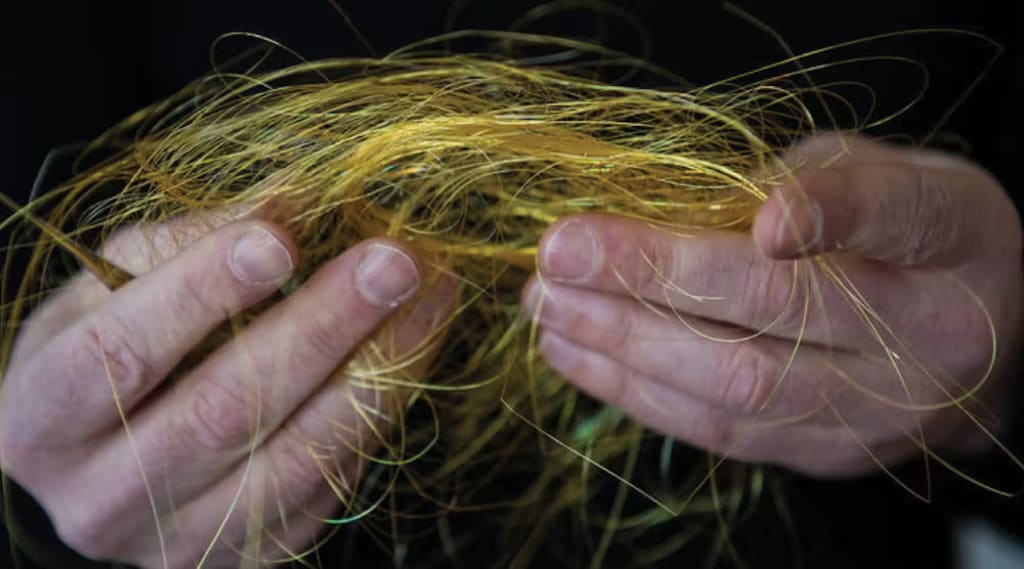Why Made-in-USA Fashion is Turning Heads
USA Fashion is Turning Heads

From innovative start-ups like the Boston-based Ministry of Supply, known for its radically designed sportswear, to well-known brands like No Nonsense, Made in the USA, apparel and textile manufacturing are right on trend. But that wasn't always the case.
Clothing was one of the first industries to fall victim to offshore manufacturing. The trend toward a labor-intensive garment industry began when companies brought cheap labor to low-wage countries more than forty years ago. Currently, only about 3% of our consumption comes from domestic sources, but domestic industry is starting to recover.That's good news because just eliminating the trade deficit in the apparel sector would reduce the overall trade deficit by $120 billion a year, or about 25% of the overall deficit. This would create about 1 million manufacturing jobs in the United States.
Today US apparel production is doing better than expected. Data from the Relocation Initiative shows it ranks sixth in the industry with 17,166 jobs recovered at 287 companies since 2010. So what has changed?
Many factors attract attention, such as the need for speed, greater flexibility, smaller batches and less inventory.Local sourcing meets the needs of today's on-demand apparel consumers. Here are some of the latest reasons companies are gaining competitive advantage in a local method of production and sourcing.
Companies relocate
startups: Domestic production is a strategic approach to protecting against counterfeiting, quality issues and intellectual property risks. For apparel startups, room-to-room provisioning or relocation increases efficiencies for smaller batches, provides more flexibility for customization and style changes, and speeds delivery to customers.
Sasha Koehn and Erik Schnakenberg's clothing startup Buck Mason has chosen Los Angeles to produce t-shirts, jeans and buttons.They were able to produce their first batch of t-shirts locally for as little as $5,000. They estimated that a trip abroad just to see the offshore rig would cost about that amount. In addition to the huge savings in travel expenses, they have found that the physical proximity makes production management easier and guards against risky and unethical labor practices that could potentially damage their brand.
Established Brands
,Brooks Brothers, a brand that has regularly manufactured some of its clothing in the United States since 1818, has recalled 70% of its clothing overseas due to rising wages, quality issues and delivery times. The move increased employment at the Haverhill, Massachusetts site by approximately 300 to 530 employees.They make about 6,000 buttoned shirts a week at their Garland, North Carolina, factory, which employs about 200 people. Since their inception, the companies have also made ties within a 10-mile radius of their New York flagship store, assembling about 1.5 million hats annually.
Made in the USA, the design and manufacturing teams work closely together to best meet emerging trends with greater flexibility and significantly reduced lead times. "When the market needs it, we react," says Jan Martynec, Senior Vice President of Production. He adds, “We are always looking for additional manufacturing facilities and products to manufacture in the United States.S. with a very fast completion date. We constantly invest in technology to maintain productivity and increase competitiveness. He also said they are considering turning their factories into duty-free sub-zones.
To encourage local manufacturing, Under Armor CEO Kevin Plank transformed a former bus garage in South Baltimore into an innovation hub called the City Garage. City Garage is home to Under Armor UA, a 35,000 square foot design and manufacturing facility. In addition to hosting the UA flagship, Plank's vision was to create a creative space for entrepreneurs and startups. It's about bringing design and manufacturing under one roof to drive
innovation and collaboration, attract talent and shorten the supply chain to get products to consumers faster and more efficiently. They found that the design, prototyping, and production time had dropped from 18 months to just 4 months.The proximity of designers and engineers helps speed the process through in-garment construction, faster prototyping, and advanced designs that streamline the manufacturing process.
Smaller batches reduce inventory and overall costs, while greater flexibility ensures extensive customization, easier style changes and faster time to market for faster fashion. Advanced technologies overcome operational inefficiencies and the on-site model has positive economic and environmental impacts for today's socially conscious consumers.
In 2015, Peds invested $16 million to upgrade an existing sock manufacturing facility in Hildebran, North Carolina. They added state-of-the-art equipment and technology, automation, software and innovative manufacturing systems to effectively support the growing Made in USA business. sock programs. The 64,000-square-foot facility employs approximately 180 people and continues to offer these programs to its clients to this day. Gildan acquired Peds in 2016 and grew sales of the
brand through new channels.They integrated the Hildebran facility into the company's vertically integrated manufacturing facility, which includes seven US spinning mills employing nearly 1,400 people.
US Consumers Lead Offshoring Trend
US consumer spending power is attracting more and more manufacturing jobs to the US. According to a recent nationwide survey by Consumer Reports, nearly 8 in 10 American consumers say they'd rather buy an American product than an imported one, and over 60% say they're willing to pay as much as 10% more for it. Why is it important for Americans to buy U.?products from S.? Further analysis of the study reveals that Americans believe US-made products are more reliable (84%), want to preserve manufacturing jobs nationwide (88%), support the economy (87%) and America's strong position want to assert themselves on the world market. Economy (84%).A recent data report from the Reshoring Initiative confirms that Made in the USA is a strong driver to move production back to the US and ranks fourth on the list of reasons for moving production.
Factory of the Future
Automation is a strong argument for moving. Finding the labor needed poses a challenge to sourcing in the United States, but as automation reduces labor-intensive activities, local production often proves cheaper than sourcing production from distant suppliers.Robots called "Sewbots", computer-aided manufacturing, 3D printing and automated systems are changing the dynamics of apparel manufacturing in the United States.
Clothing was one of the first major product categories to disappear and is the most dependent on imports as a percentage. As consumer demand changes, apparel production is growing in the USS.'s investments in innovation and automation will certainly be part of this mix. The overall cost savings, speed and flexibility of local manufacturing combined with new technologies levels the playing field and makes American manufacturing profitable.The success of offshoring in the apparel sector should encourage companies across a wide range of consumer goods to re-evaluate their offshoring.
For Visit @ https://www.onlineshoppinghubs.com/usa/women-shopping/
About the Creator
Global News Hubs
i write health, education, motivational, Business, Motivational, Lifestyle and Self confidence, Movies Reviews
Enjoyed the story? Support the Creator.
Subscribe for free to receive all their stories in your feed. You could also pledge your support or give them a one-off tip, letting them know you appreciate their work.






Comments
There are no comments for this story
Be the first to respond and start the conversation.